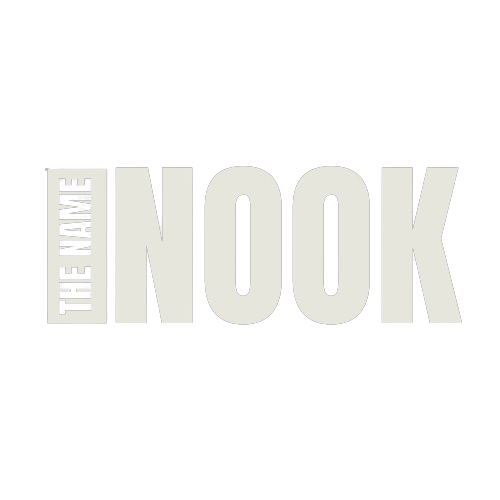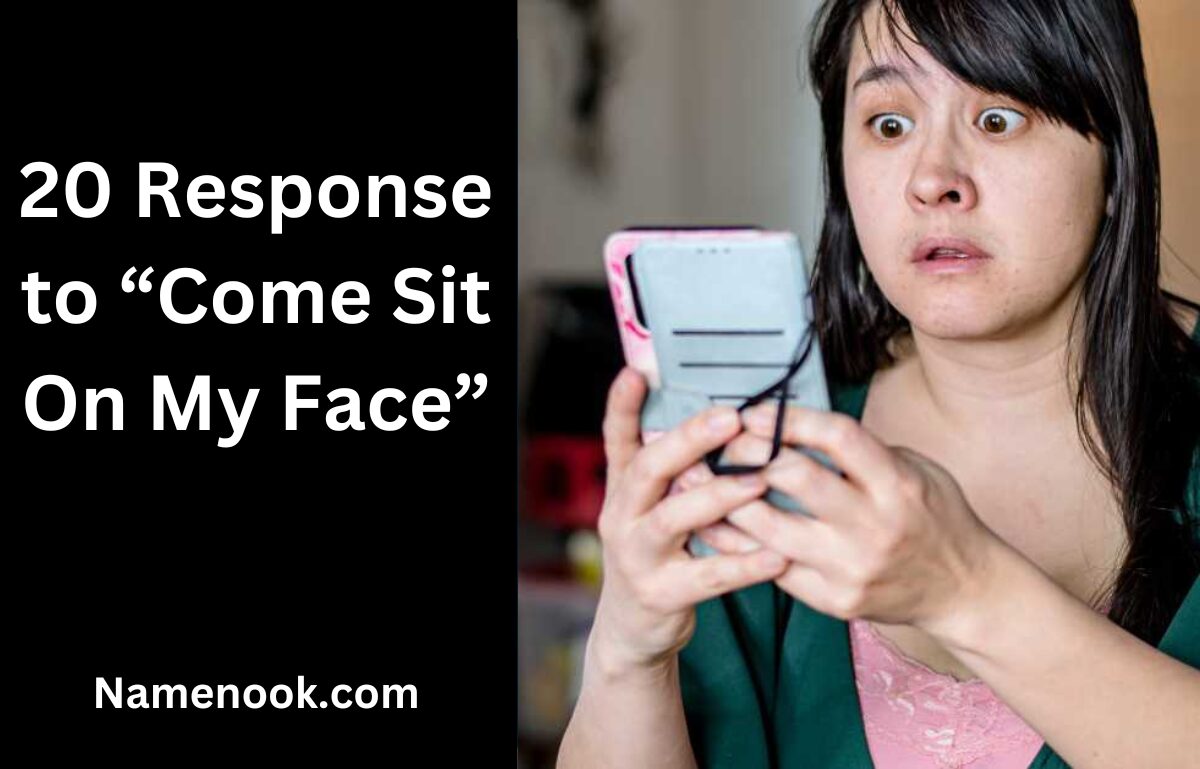Discover the best responses to ‘Come sit on my face’—whether flirty, humorous, or dismissive. Learn how to reply confidently in any situation.
In today’s world, language and communication often manifest in ways that can surprise, shock, or even offend.
Take the phrase “Come sit on my face,” for example. While it might initially appear crude or inappropriate to many, it carries deeper implications and diverse interpretations within the contexts of culture, consent, and sexual expression.
In this article, we will explore the meaning of this phrase, how to respond to it, and provide some example responses.
Let’s dive in!
What’s Meaning of “Come Sit on My Face”
The phrase “Come sit on my face” is an explicit sexual reference, indicating that the speaker desires someone to place their genital area on their face, usually as part of oral sex.
This is an adult expression and should be used with caution, appropriate only in very private and consensual situations among adults.
It is often considered vulgar and is not suitable for public or casual conversation.
How to Response to “Come Sit on My Face”
If someone says “Come sit on my face” and you’re uncomfortable with this comment, it’s important to set clear boundaries.
You can respond firmly with, “I don’t find that kind of comment appropriate, and I’m not okay with it. Please don’t say things like that to me.”
You have the right to feel safe and respected in all interactions. If you feel harassed, it’s also within your rights to remove yourself from the situation and seek help.
Response to Come Sit On My Face
- “Thanks, but that’s not my style.”
- “I’ll politely decline, but thanks.”
- “That’s a no-go zone for me.”
- “Appreciate the offer, but no.”
- “Not in this lifetime, sorry!”
- “I’m going to have to pass.”
- “Let’s keep things respectful, please.”
- “I prefer more conventional seating.”
- “That’s not on my agenda.”
- “I value personal boundaries more.”
- “Not something I’m comfortable with.”
- “Let’s maintain some decorum, shall we?”
- “I think I’ll stand, thanks.”
- “I’m not into that, sorry.”
- “Respectfully declining that invitation.”
- “That’s a hard pass from me.”
- “Let’s not cross that line.”
- “I’d rather keep things platonic.”
- “Thanks, but let’s stay friends.”
- “I’m all for keeping it classy.”
ALSO READ: Responses to “Why Do You Care”
1. “Thanks, but that’s not my style.”
This response can be particularly appropriate in social settings where an individual faces a sexual proposition that crosses their personal boundaries or comfort zone.
It enables the person to clearly express their disinterest without initiating a confrontation or needing to provide further explanation.
Using such a polite yet firm response can be effective in various environments, whether at a casual outing with friends, a crowded party, or a gathering.
2. “I’m not into that, sorry.”
This phrase is appropriate when you want to reject an advance firmly without escalating the situation.
It can be used in social settings, casual encounters, or online interactions where you feel comfortable enough to politely decline.
It succinctly communicates your disinterest and discomfort with the proposition, allowing you to maintain your dignity and assert your personal boundaries.
ALSO READ: Best Responses to “I Like Your Lips”
3. “That’s a no-go zone for me.”
You would use this phrase in a respectful yet firm tone when someone makes you feel uncomfortable or violates your values or personal space.
For instance, if you’re at a social event or interacting online and someone uses the pickup line “Come sit on my face,” this response immediately communicates that their suggestion is unacceptable to you and that you’re not interested in engaging in that manner.
It’s a way to assert your feelings without being confrontational.
4. “Appreciate the offer, but no.”
This phrase is a firm yet polite way to decline the offer. It can be used anytime and anywhere, maintaining civility while clearly expressing disinterest.
Whether the proposition is made in person, through text, or on social media, this response sets a boundary and is an appropriate way to address sexual innuendos.
5. “Not in this lifetime, sorry!”
In the context of an inappropriate or sexually suggestive comment like “Come sit on my face,” this response clearly indicates a boundary and refusal.
It’s important to use this type of reply in a safe environment where the responder can walk away or seek help if needed.
This phrase should be used when an individual wants to immediately shut down the conversation and make it clear that they will not entertain such a request.
6. “I’m going to have to pass.”
It communicates disinterest without being confrontational. This response can be used in personal or social situations where someone feels uncomfortable or wishes to maintain professionalism.
It’s suitable for various environments, from a casual social gathering to a workplace setting, whenever someone encounters behavior that crosses personal boundaries.
ALSO IN OUR GUIDE: Best Responses to “How Was Your Day”
7. “Let’s keep things respectful, please.”
This response establishes a clear boundary with politeness and assertiveness.
It’s especially valuable in public forums or group discussions, whether online or offline, when someone’s remarks verge on disrespect or cross boundaries of decency.
It serves as a gentle reminder to uphold mutual respect and civility among all participants, aiming to prevent escalation into conflict.
8. “I prefer more conventional seating.”
When faced with unconventional seating choices, such as a novelty chair resembling a human face, you might feel discomfort or find it unsuitable for the occasion.
In such situations, politely declining by saying “I prefer more traditional seating” communicates your preference for standard chairs or sofas.
This response is suitable for informal settings like a friend’s house or a casual event where the seating might be intended as a humorous or quirky touch.
9. “That’s not on my agenda.”
This response is appropriate in situations where maintaining professionalism and establishing boundaries is important, without using aggressive language.
It can be applied in various contexts, including social events and the workplace, particularly when confronted with an uncomfortable suggestion.
It clearly conveys that the proposal is not open for further consideration or discussion.
10. “I value personal boundaries more.”
A direct and assertive response, like “I prioritize personal boundaries,” is a potent reply suitable for situations involving intimidation or sexual harassment.
Whether encountered at social gatherings, in the workplace, or any setting where such unwelcome comments might occur, this response firmly communicates a stance on personal space and respect while discouraging further inappropriate remarks.
11. “Not something I’m comfortable with.”
This phrase is intended for situations where someone wishes to express their discomfort without escalating into a confrontation.
It can be suitable in different settings, such as social gatherings, text conversations, or online interactions.
By calmly and clearly stating your comfort level, the aim is to de-escalate tension and assert a clear boundary.
12. “Let’s maintain some decorum, shall we?”
This response is appropriate in environments that demand professionalism and respect, such as workplaces, educational settings, or public gatherings.
It provides a firm yet polite way to reject an inappropriate comment and prompt the speaker to uphold social etiquette and professionalism.
By using clear and direct language, it effectively communicates personal boundaries without escalating the situation.
ALSO VISIT THIS: “The Moon Is Beautiful Isn’t It” Responses
13. “I think I’ll stand, thanks.”
This response can be used when someone wishes to decline an offer without causing escalation, ensuring their dignity and comfort.
It’s suitable for different settings, whether at a social event, a party, or in a private environment, where the advance is unwelcome and requires a firm yet calm response.
Funny Response to Come Sit On My Face
- “I have a severe allergy to human chairs!”
- “Apologies, my sitting license has expired.”
- “Sure, if you’re a cloud.”
- “I’m more of a magic carpet person.”
- “Face is currently undergoing maintenance.”
- “Unfortunately, I left my seat cushion at home.”
- “My face doesn’t double as a chair!”
- “All seats are taken, standing room only.”
- “Face seating? That’s a new concept.”
- “I’m reserving that seat for later.”
- “Face reservations are fully booked until 2050.”
- “Sorry, I’ve declared a no-fly zone.”
- “Face parking is at maximum capacity.”
- “Only if you’re wearing an invisibility cloak.”
- “Face isn’t available for service today.”
- “I’m not accepting face passengers right now.”
- “My face is currently on strike.”
- “Face seating? That’s a health and safety violation!”
- “This ride is temporarily unavailable.”
- “Face seats are reserved for VIPs only.”

